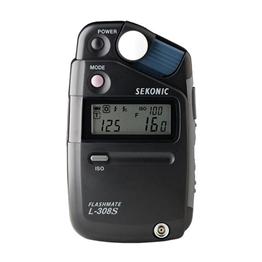Here's the fine print for the class:
Black and White
Photography I ART1186 sec 01
SP 2015 V1.1
Tuesday & Thursday
1:00-4:00
01/13/15 class
intro; exposure and development; assignment #1-The Black & White image 01/15/15 TBA possible field trip weather depending or
slide lecture
01/20/15 film processing demo; students bring exposed roll to class
from Assignment #1
01/22/15 slides for assignment #2 (“Street Photography-Decisive Moment”)
& lab time for film processing
01/27/15 Contact
printing & enlarging demo; students bring developed film to class
01/29/15 Critique
assignment #1-The Black and White Image
(Eric) Stan @ IUSB
02/03/15 Contrast control & Burning and Dodging demo -work day-Filter
assignment P/F
02/05/15 Lecture for assignment #3
Audio Assignment (9th & Hennepin)
02/10/15 Critique for assignment #2- Street Photography/Decisive Moment
assignment
02/12/15 No Stan-Eric shows slide for #5-“Environmental Portrait”
02/17/15 No Stan-lab day with Eric
02/19/15 Critique
for #4 Audio assignment
02/24/15 field
trip
02/26/15 slides
for assignment #6 Studio portrait
03/03/15 Studio
lighting demo
03/05/15 Fiber print demo/lecture
03/08-15 WU Spring
Break-lab closed
03/17/15 Critique
for # Environmental Portrait #5
03/19/15 Lecture
and give assignment # 6 TA choice-Eric
03/24/15 Slides
for studio assignment #8 Studio nude
03/26/15 nude
model in class
03/31/15 Critique for #6
TA’s Choice-Eric
04/02/15 critique # 7 Studio portrait
04/07/15 Slides
for Self portrait #10
04/09/15 critique
for assignment #8 studio nude
04/14/15 Stan’s
Life in Art lecture
04/16/15 critique
for assignment #9-Personal Still Life
04/21/15 presentation,
mounting and matting
04/23/15 critique
for # 10 Self Portrait
04/24/15 last
day of classes
04/27/15 final
portfolio due today
04/29/15 final
exams begin
05/05/15 portfolios
returned
Assignments:
- Exposure and development P/F
- Street Photography-decisive moment
- Contrast filter assignment P/F
- Audio assignment
- Environmental Portrait
- TA’s choice (Eric)
- Studio Portrait
- Studio nude
- Personal Still Life
- Self portrait
Final Portfolios:
You are expected to shoot film,
perform all lab work, and final presentation. Students who use other students’
prints or negatives without attribution are guilty of cheating and will be
referred to the Associate Dean for further action, and fail the class. Final
portfolios consist of 10-15 matted or mounted prints, printed to your highest
standards. Portfolio may include
assignments, may be thematic, or may just have 15 of your best images. All prints should be spotted and ready for
presentation. All prints must be in
something that resembles a folder or case.
No trash bags or loose prints please.
Label all mats on rear with your name and class.
Grading:
Work will be graded in two parts,
1) craft and technique, which refer to camera handling skills, and print
quality and 2) concept and creative solution to assignment problem.
Final grade comprised of the
following guidelines:
25%
assignment
25%
attendance and class participation
50%
final portfolio
Grade values:
A+, A, A-: Superior
work and effort. This grade level is for those who demonstrate and maintain
strong, creative concepts, intellectual curiosity, focused work ethic, and
courage to push beyond safe limits. They produce work consistently, and create
technically and conceptually excellent work that is innovative and resolved.
They actively participate in critiques, and show a high level of independence
and motivation facilitating the studio community and their education.
B+, B, B-: Very
good work and effort. This grade implies above average work,
participation/citizenship
and demonstrates an effort beyond expectations to discovery in the process of
developing a solid studio practice. The B student works hard but struggles with
technique and process; or has good conceptual goals but does not put forth
substantial skill/effort to communicate them effectively.
The B range student
may be doing minimal outside research to develop ideas but makes use of the
faculty/peer suggestions and dialogue.
C+, C, C-: Average
work and effort. This grade indicates good attendance, completion of ideas, and
some extra work. Adequate time spent in studio. The C student struggles with
resolving projects in a coherent manner, or may struggle with the development
of a consistent and rigorous studio practice. Their participation and
initiative in critique settings and seminar is minimal, and they often fail to
initiate peer/faculty feedback.
D+, D, D-:
Unsatisfactory work. Often, these grades are earned through poor attendance,
late work or not following directions.
F: Failing work.
Attendance policy:
Students are expected to attend
all classes, in case of medical excuse, students are responsible for supplying
documentation to faculty. Excessive
absence (five unexcused) will result in
lowering of grade, one letter and seven unexcused, failure of class
entirely. Students should plan on
arriving to class on time. Excessive tardiness will result in a lowering of the
final grade.
Digital Etiquette:
This should go without saying, but let’s say it anyway: you should
turn off your cell-phone and/or other devices (iPods, etc) before you enter the
classroom. If your phone rings once during class this semester, we’ll all laugh
and I’ll ask you to turn it off. If your phone rings again during class this
semester, we’ll need to have a talk.
I understand that your phones connect you with your friends and
family, but the classroom should be a place apart, however briefly, from the
outside world. You will learn more, in short, if you can concentrate on the
class while you’re in class. If you’re really into your phone to that extent,
consider taking my class this Spring 2015 “Cell
Phones, Snapshots and the Social Network”, it’ll all be about the mobile
device and making art.
Stan’s office number/voice mail: 935 8406
Stan’s cell 314 440 2894
Class blog: www.blackandwhitephoto1.blogspot.com
















